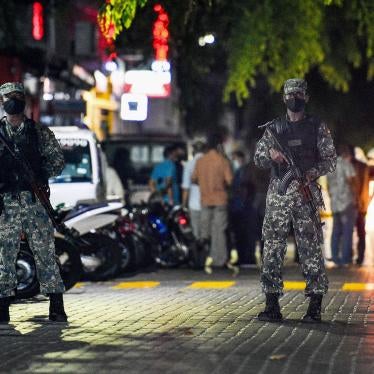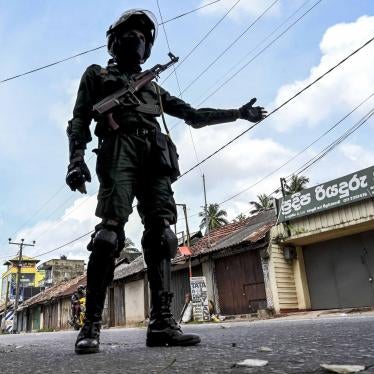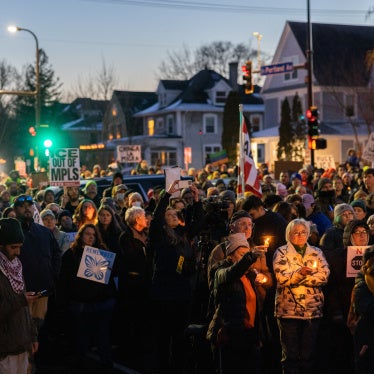President Obama gave a major speech in Washington today on US counterterrorism policy. The speech contained a number of significant announcements, including notice that the administration would resume releases of Guantanamo prisoners “recommended for transfer” to other countries and a pledge to clarify the process and improve transparency with respect to the use of unmanned aircraft—drones—to conduct lethal operations outside of traditional situations of armed conflict.
By far the most significant outcome of the speech, however, was that Obama pledged to “engage Congress about the existing Authorization to Use Military Force” that was passed in the days after the September 11 attacks, as part of an effort to “refine—and ultimately repeal—the AUMF’s mandate.” President Obama today seemed to mark the beginning of the end of the worldwide “war on terror.”
Pointing out that the AUMF is almost twelve years old and that US involvement in the war in Afghanistan will be coming to an end in 2014, Obama noted that “core al Qaeda is a shell of its former self” and that “not every collection of thugs that labels themselves al Qaeda will pose a credible threat to the United States.” The president also warned of the dangers of “perpetual war,” suggesting that it “will prove self-defeating, and alter our country in troubling ways.” And he stated a desire to work out a new, more limited framework for the use of lethal force against terrorist threats.
“Our systematic effort to dismantle terrorist organizations must continue,” he said, “But this war, like all wars, must end. That’s what history advises. That’s what our democracy demands.”
The rejection of perpetual war is notable, but serious questions remain. The president, for example, maintained that, for the time being, the US remains engaged in an ongoing war with al Qaeda and unspecified “associated forces.” Yes, the assessments of a severely weakened core al Qaeda and weakened and arguably unassociated forces in other countries mean that, outside of Afghanistan, the situations in which the US can use lethal force are arguably already quite curtailed, even under the existing AUMF framework. But until the president actually defines “associated forces” the current formulation leaves open the possibility of unlimited, unending use of military force, anywhere in the world.
Obama offered no new guidance on how he would engage with Congress on these questions. The tone of the speech left the impression that Obama believes lethal military force will, in the future, be used less and less over time and against fewer and fewer targets. But for the time being many of the administration’s current standards seem to remain in place. Although the president stated that the US has a preference for capture (the US “will not take strikes when we have the ability to capture individual terrorists”), he also laid out a still very broad standard for the use of lethal force outside of Afghanistan: “[W]e act against terrorists who pose a continuing and imminent threat to the American people, and when there are no other governments capable of effectively addressing the threat. And before any strike is taken, there must be near-certainty that no civilians will be killed or injured—the highest standard we can set.”
A notable point of this articulation is that it does not seem to justify strikes against entities who are primarily insurgent, not terrorist, forces—groups in Pakistan, Yemen or Somalia who are engaged in armed conflict with their government. But since such forces can be potentially double-painted as both insurgent and terrorist forces “associated” with al Qaeda (whatever that might mean), the administration appears to retain the power to target them. And the administration has engaged in such double labeling in the past.
Disturbingly, the president said nothing about the past practice of “signature strikes,” whereby lethal force is used against groups of unidentified persons suspected of being members of forces “associated” with al Qaeda, based on an analysis of their appearances and actions, not clear evidence of their specific identity as combatants within a targeted group.
Perhaps one of the most remarkable aspects of Obama’s speech was how late it comes in the arc of history. The two operational architects of the September 11th attacks who were still alive after the attacks, Khalid Sheikh Mohammad and Ramzi Bin al-Shaib, were arrested in 2002 and 2003. And since 2003, few remaining members of al Qaeda’s original group of 9/11 conspirators were linked to any operational plots against US interests. Yes, Osama Bin Laden was killed only in 2011, but as President Obama himself noted, core al Qaeda was unable to launch a single terrorist plot against the US homeland after the 9/11 attacks. In other words, much of what President Obama announced in the speech was already true when Obama was still no more than an Illinois State Senator.
What, in the end analysis, was today's speech really about? The Constitution? Rule of law? Drones?
As Obama seemed to acknowledge indirectly, the real topic was about violence—or more precisely, what limits can be placed on it, and in what contexts.
“We must define the nature and scope of this struggle,” Obama said, “or else it will define us.”
We already knew, or should have known, this deeper truth. We all know that in the context of ordinary law enforcement, police officers can apprehend, detain and even use deadly force provided lawful exigencies allow. We all know that the use of deadly force is bounded by a panoply of legal hurdles, that in the context of armed conflict, the hurdles are loosened: a soldier in wartime can do more than a law enforcement officer. We know that, without warning, combatants in wartime can target and kill any person who meets the threshold of being an enemy combatant. This looser paradigm of wartime is the atmosphere in which the discussion of lethal strikes exists.
Today’s speech, however, did not offer guidance on where war ends and only law enforcement rules apply.
US counterterrorism operations, today, remain in the more untethered atmosphere of armed conflict. And while President Obama’s pledges to rein in lethal operations could prove a step in the right direction, until limitations are put in place, the boundaries for the use of US military force remain disturbingly undefined.







